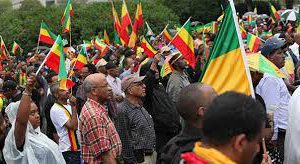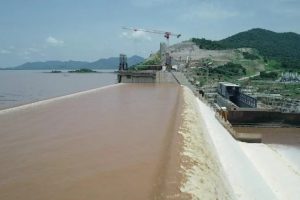BY STAFF REPORTER
Ethiopian diaspora communities exist in various parts of Europe America and Middle East. The communities embrace hundreds of thousands of Ethiopians and Ethiopian descents. The diaspora community members actively engage in supporting their nation in various ways like contributing money for domestic purposes, participating on events, voicing concerns on current national issues among others.
The diaspora are able to reinforce their activities as they organized themselves in communities. Through working in close collaboration with embassies and consular offices in their respective countries of residence, they have continued to discharge their national responsibility.
Especially after many members of the diaspora started running their own media, their role in promoting their original culture, reality of their country of origin as well as voice of their compatriots is in a better position to get attention of the international community.
By doing so the Ethiopian diaspora have been able to broadcast information that can correct wrong impression of the international community against the country. “Various governments and international organizations are aware of the assault by the terrorist TPLF against the Ethiopian National Defense Forces (ENDF). But based on the fake information supplied to them they used to claim that the federal government was launching an attack against the Tigray government” says Zewdu Mengiste, an Ethiopian descendant who lives in UK.
Getachew Bekele, an Ethiopian who lives in Oslo, Norway. He runs a website called Gudayachin. It has been operating since 2011. It has a large audience at home and abroad. He says policymakers also attend to it and so it is impactful.
According to him by the time of the outbreak of the conflict in Tigray many of the foreign governments and international organizations were biased against the Ethiopian government, because of the highly organized misinformation and propaganda campaign of TPLF supporters. But the Ethiopian communities and the members like him were able to correct the misunderstanding through their diaspora media.
“There is a need to present correct images of the nation to the outside world. When we do that we have to make it in the form of giving and take. We publish stories about the positive image of others also. This is because people like their country. For instance, when they celebrate their national day we attend that and give them coverage”
Another Ethiopian, Ustaz Jemal Beshir, who lives in USA, also runs a media entitled “The Kings of Abay (Nile)”. His media has been actively engaged in giving appropriate information about Ethiopia’s right to use its natural resources especially the waters of Nile and to correct the misinformation about the construction of the GERD by lower riparian’s.
His contribution has been of much significance as the country needed due support, especially of public diplomacy from its citizens abroad.
Literature on Diaspora media clearly shows that the media plays a crucial role in the construction of migrant identities. The capacity of Diaspora media to initiate change in undemocratic societies has vastly increased, creating new sources of information, and platform for scrutinizing home governments by orchestrating international pressure against unpopular policies.
Many diasporas have developed a range of media channels to bind members and maintain connection with the homeland. Religious communities are amongst the biggest transnational media players, for example in the development of Christian broadcasting channels or the multiplicity of sites for Koranic interpretation on the Net. Transnational political activity is fostered and coordinated through the use of media, the Net and mobile telephony. These practices do not fit into classic studies of national mass media or even international communication.
Communication and networking are crucial aspects of diasporic life and are made possible by media technology in its various forms. Where they have access, telephone, wireless, satellite, cable and digital technologies allow people to communicate directly in sound, text, and image across the globe.
Although migration separates people from homes, families and friends, diasporas reconnect them. Communication and networking are crucial aspects of diasporic life and are made possible by media technology in its various forms.
Where they have access, telephone, wireless, satellite, cable and digital technologies allow people to communicate directly in sound, text, and image across the globe. And, although media revolutions are typically associated with large corporations and global finance, many innovations are driven by dispersed individuals and groups who want and need to be in regular direct contact with one another, to exchange information, goods and services, and just to keep in touch.
If the home country or place of origin is the first space for migrants, and the settled country is the second, then communications technology creates the possibility of a third space which is not there, nor here, but an alternative space where contact can be made, new relationships formed, and identities negotiated.
These are new and still emergent practices, growing out of the contemporary lived experience of transnational communities and networks strung out across a variety of locations. They complicate models of ‘the West and the Rest’ and raise important questions about the limitations of available models of both communications and collectivities.
The Ethiopian Herald October 24/2021




